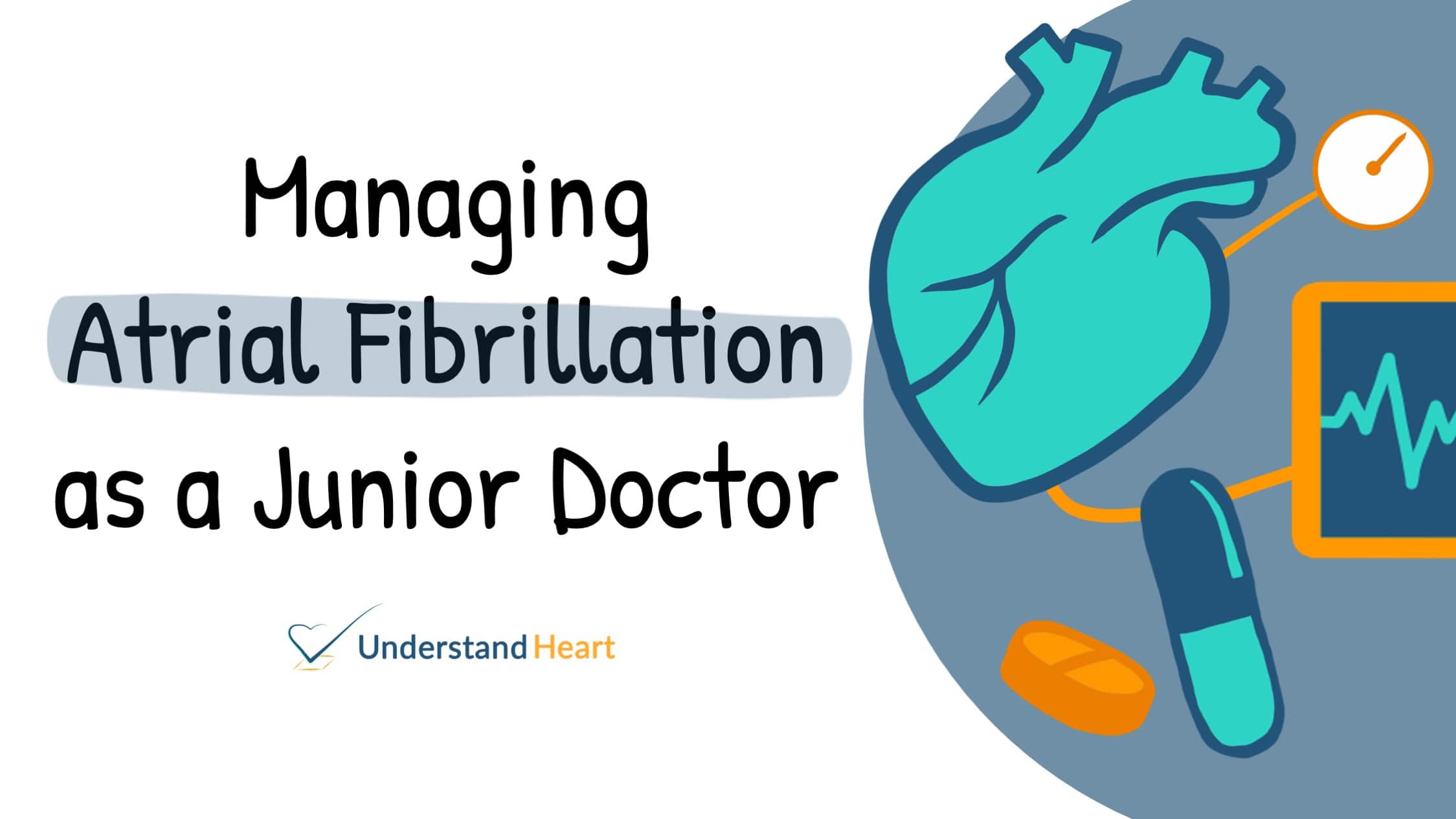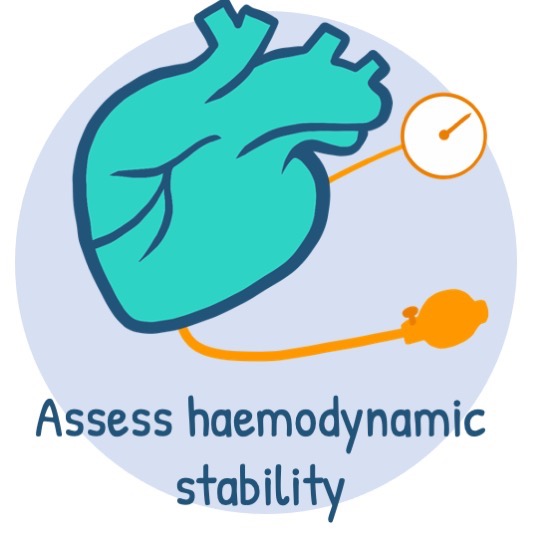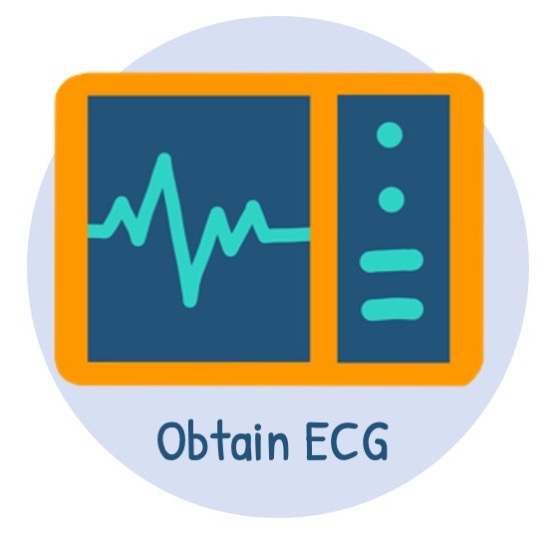
Atrial fibrillation management guide for junior doctors
1. Assess haemodynamic stability

Most presentations within cardiology has the potential to become cause haemodynamicinstability. AF certainly falls under this category. When you get called to see or review a patient with AF, it is very important to first assess the haemodynamics through the ABCDE approach. If the patient is unstable – (with signs of shock (hypotension (systolic blood pressure <90 mm Hg), pallor, sweating, cold, clammy extremities, confusion or impaired consciousness), syncope, myocardial infarction or heart failure) then perform steps to stabilise the patient and skip to 10: obtain senior help early!
2. Confirm diagnosis with ECG

If the patient is stable, the first step would be to obtain an ECG to confirm the diagnosis of AF and look for any signs of ischemia. AF is defined on the ECG as loss of the normal p-wave with irregularly irregular QRS complexes. The rate is commonly quite fast at >100 beats per minute.
3. Check time of onset of AF / symptoms
Once the diagnosis is confirmed, ascertain time of AF or symptom onset. This is important as knowing the symptom onset time can help determine the management strategy – is it safe to shock the patient (ESC Guidelines recommend onset of <48 hours for DCCV).
4. Ascertain associated symptoms – look for triggers
Find out what are the triggers to the current decompensation. Common triggers are infections such as pneumonia or urinary tract infections, hyperthyroidism, electrolyte imbalance. The history can provide clues to these triggers and blood tests can be done to confirm.
5. Ascertain past medical history / risk factors
As AF is a multifactorial disease, we can ascertain other common cardiovascular risk factors which may need to be addressed such as hypertension or diabetes. Confirm the medications which the patient is taking as they may need to be modified to improve control. The management of AF also includes the concomitant management of other associated diseases. Determining medical history will also allow you to calculate the CHADS2VASc score.
6. Examine for associated diseases (valvular heart disease)
Examination should not be missed as it could give you some clues for potential diseases which the patient is unaware of such as valvular heart disease like mitral regurgitation or identify an infection such as cellulitis or pneumonia on the examination.
7. CHA2DS2-VASc Score
The CHA2DS2-VASc Score is a useful clinical score to guide the decision for anticoagulation. A score of >2 indicates requirement for anticoagulation, a score of 1 to consider anticoagulation and score of 0 means no requirement for anticoagulation.
C – Congestive Heart Failure
H – Hypertension
A2 – >75 (2 points)
D – Diabetes
S2 – Stroke (2 points)
V – Vascular disease (including MI, PVD, Aortic disease)
A – 65 to 74 years old
Sc – Sex category: Female
8. HAS-BLED Score
Calculate the HAS-BLED score to determine the risk of bleeding. Generally, unless the HAS-BLED score is high and we are unable to alter it, anticoagulation normally takes precedence. HAS-BLED score is used to identify factors which we can modify to reduce risk of bleeding.
H – Hypertension (uncontrolled BP)
A – Abnormal renal / liver function
S – Stroke
B – Bleeding tendency
L – Labile INR
E – Elderly (>65)
D – Drugs (NSAIDs, antiplatelets) and alcohol
9. Explain to patient regarding disease / management plan
Most junior doctors will be very comfortable doing all of the above as these are common things taught and practiced in medical school. However, management of the disease comes hand in hand with diagnosing. Always remember management of AF involves 3 areas – treating AF which means rate vs rhythm control strategy, anticoagulation based on CHA2DS2-VASc Score and management of associated conditions such as BP control.
Tips: I would normally encourage junior colleagues to present their management plan to the patients under supervision – this is a good test of knowledge, organisation of thought and communication skills.
Step 10. Call for help / Discuss with senior colleagues
Discuss at any point with senior doctors about your patient. Try to do as much as you can before getting to this stage whilst ensuring that the patient is safely managed. Try to follow and learn from the senior registrars or consultants. Learn what they do, how they approach discussion and ask when you don’t understand. Much of the learning is done at the bedside and you remember best when you can link a memorable case to the disease.